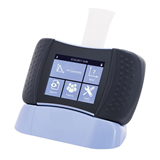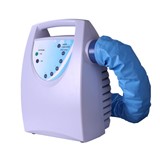Key Takeaways
- Follow-up is a core part of modern clinical governance. Proactive post-care contact is a key way to demonstrate continuity of care, a central requirement of Australian accreditation bodies like the RACGP.
- Automate your recalls for chronic disease. With nearly half of all Australians managing a chronic condition, using your Practice Management Software (PMS) to automate recalls for annual reviews is the most efficient way to improve health outcomes and meet quality indicators
- A simple post-procedure call reduces complications. A 48-hour follow-up call from a practice nurse after a minor procedure (like a skin lesion removal) can significantly reduce infection rates, improve patient confidence, and prevent costly hospital readmissions.
- Match the channel to the purpose. Use automated SMS for simple reminders, secure messaging for sending non-urgent information, and a direct phone call for sensitive or complex follow-ups. Always obtain and document patient consent for electronic communication.
- Focus on high-risk transitions. The period immediately following a hospital discharge is a high-risk time for patients. A proactive follow-up call to review medications and confirm discharge plans can prevent errors and support a safe recovery.
- Assign and schedule for success. Make your follow-up plan a reality by assigning clinical tasks to nurses and non-clinical recalls to admin staff, then block out dedicated time in their schedules to ensure it gets done.
Introduction: Redefining the end of the patient visit
For decades, the patient journey had a clear endpoint: the moment they walked out of your clinic's door. In 2025, that model is no longer fit for purpose. In a healthcare landscape where, according to the Australian Institute of Health and Welfare (AIHW), nearly one in two Australians live with one or more chronic conditions, episodic, reactive care is failing our patients. The future of high-quality primary care lies in extending the relationship beyond the consulting room through proactive post-care follow-up.
This isn't about creating more administrative work for your already busy team. It's about using smart, systemised strategies and modern technology to improve patient outcomes, enhance patient loyalty, and meet your clinical governance obligations. This article provides a practical guide for Australian practice managers on how to design and implement an effective post-care contact strategy that delivers a clear return on investment for both your patients and your practice.
The clinical and business case for proactive follow-up
Implementing a follow-up system is not just "good service"; it's a strategic decision with a clear clinical and business ROI.
- Clinical ROI: Proactive contact has been proven to improve patient outcomes. It leads to better medication adherence, earlier detection of post-procedure complications, and more effective management of chronic diseases. For your clinicians, it's a powerful tool for preventative care.
- Business ROI: In a competitive market, practices that demonstrate they genuinely care will retain more patients. A simple follow-up call can generate powerful word-of-mouth referrals and five-star online reviews. Crucially, a documented follow-up system is also a key piece of evidence for demonstrating compliance with the RACGP Standards for general practices, particularly those related to continuity of care and patient-centred care.
Identifying your key follow-up triggers
An effective strategy doesn't mean following up with every patient for every consultation. It means identifying the key clinical moments where a follow-up can have the biggest impact on patient safety and health outcomes. Your plan should prioritise:
- Post-procedure follow-ups: A call from a practice nurse 24-48 hours after a minor procedure (e.g., skin lesion removal, IUD insertion, wound care) to check for signs of infection and answer patient questions.
- New complex medication: A follow-up one week after a patient starts a new, high-risk medication (like an anti-coagulant or insulin) to check for side effects and confirm they understand the dosage.
- Chronic disease management: Automated recalls and reminders for patients with conditions like diabetes, asthma, or heart disease who are due for their annual cycle of care or GP Management Plan review.
- Post-hospitalisation discharge: A call to a patient within 72 hours of being discharged from hospital to reconcile their medications and ensure they understand their discharge summary and follow-up instructions.
Choosing your channels: The right message for the right moment
Your communication method should match the complexity and sensitivity of the information being conveyed. Always ensure you have documented patient consent for using electronic communication channels.
- The Phone Call: This is your high-touch, premium option. It's best reserved for the most clinically important follow-ups, like checking on a patient post-procedure or discussing a complex care plan. It allows for immediate two-way conversation and conveys a high level of personal care.
- Secure Messaging: Using a secure messaging feature within your PMS or a patient portal is ideal for non-urgent communication, such as sending educational resources or confirming that a non-urgent test result is normal.
- Automated SMS: This is the workhorse for simple reminders and recalls. It is the most efficient and cost-effective way to remind patients that they are due for a routine appointment or a follow-up blood test.
Automating for efficiency without losing the human touch
The key to a sustainable follow-up strategy is to automate the routine tasks, freeing up your clinical team for the high-value interactions. Your Practice Management Software (PMS) is your most powerful tool for this.
A realistic scenario: Managing diabetes recalls
A busy GP practice in regional Victoria has over 300 patients with Type 2 Diabetes. The practice manager knows that ensuring these patients attend their annual cycle of care review is critical for both their health and the practice's quality improvement payments.
- The old way: The practice nurse would manually run a report each month, cross-reference it with patient files, and spend hours on the phone trying to contact patients to book them in. Many patients were missed, and the process was highly inefficient.
- The automated solution: The practice manager invests time setting up the recall function in their PMS (e.g., Best Practice or MedicalDirector). The system is configured to automatically identify all diabetic patients who are due for their annual review in the coming month.
- An automated SMS is sent to these patients with a simple message: "You are now due for your annual diabetes review. Please call us on [phone number] to book an appointment with your GP and our nurse."
- For patients who don't respond, a second automated reminder is sent two weeks later.
- The nurse's time is now focused only on calling the small number of patients who haven't responded to the automated prompts.
This systemised approach dramatically improves attendance rates, ensures better patient care, and frees up hours of valuable nursing time each week.
Staying compliant with privacy and consent
While digital follow-up is efficient, it comes with clear obligations under the Australian Privacy Principles (APPs).
- Documented Consent: You must obtain and document a patient's consent to be contacted via electronic means like SMS or email. This should be a clear, opt-in choice on your patient registration form.
- Secure Channels: Any communication that contains sensitive health information must be sent via a secure, encrypted channel. Standard email is not considered secure for this purpose.
- Identify Your Practice: All electronic communication must clearly identify your practice by name and provide contact information.
Defining roles and integrating the workflow
A great follow-up strategy is only effective if it's seamlessly integrated into your practice's daily operations. Without a clear plan for who does what and when, these important tasks can easily be forgotten during a busy clinic day. This operational blueprint ensures your follow-up program becomes a sustainable and efficient part of how you deliver care.
Assigning clear responsibilities
To ensure consistency and clinical safety, assign follow-up tasks based on the skill set required for each interaction.
- Practice Nurses: Your nurses are best suited for all clinical follow-ups. Their clinical judgment is essential for tasks like checking on a patient post-procedure, discussing potential medication side effects, or triaging patient concerns.
- Administrative Team: Your admin staff should manage the non-clinical recall and reminder system. This includes running the automated SMS recall lists from your PMS, sending routine appointment reminders, and handling the initial booking of follow-up appointments.
- General Practitioners: The GP's role is one of oversight and escalation. They should review and approve recall lists generated by the admin team and handle any complex clinical issues or patient concerns escalated to them by the practice nurse.
Integrating into the daily workflow
To make your follow-up program a consistent habit rather than an afterthought, embed it directly into your team's daily and weekly schedule.
- Time-block for follow-ups. The most effective method is to block out dedicated time in your nurse's schedule. A recurring 30-minute "Patient Follow-up" period each afternoon ensures there is always protected time for this critical task, preventing it from being pushed aside by other duties.
- Make it a team meeting agenda item. Add a five-minute standing agenda item to your weekly clinical or team huddle to review the upcoming recall list or discuss any complex follow-up cases. This reinforces the program as a team priority and provides a forum for collaboration.
Conclusion
Proactive post-care follow-up is a hallmark of a modern, high-quality Australian medical practice. By moving beyond a purely reactive model of care, you can make a profound difference to the health and well-being of your patients, particularly those managing chronic conditions. A systemised and technology-enabled follow-up strategy is not an administrative add-on; it is a fundamental investment in patient safety, clinical quality, and the long-term trust that forms the bedrock of primary care.










